Mold Prevention in Long Island
Learn How to Prevent Mold from Growing in Your Home
Mold grows in warm, humid and moist conditions such as basements and crawl spaces. But mold can grow on nearly any surface that contains organic material. Not only is a mold problem difficult and costly to fix, but mold can also produce allergens and irritants (and, rarely, toxins) that may compromise your health.
How Does Mold Grow
In homes and basements the most common “food” source for mold is an abundant organic polymer called cellulose. The most common breeding grounds for mold in homes are:
- Wood
- Wallpaper
- Carpet
- Drapes
- Leather
- Upholstery
- Ductwork
- Clothes
- Insulation
- Paint
- Dust

How to Prevent Mold Growth
While you can’t mold-proof your home, you can make it mold resistant. Below are a few ways to make your home mold resistant.
- Control Indoor Climate
Mold problems tend to emerge during hot, humid summers when people tend utilize their air conditioner. But if you set the thermostat too high then your air conditioner won’t dehumidify your air effectively or if you set it too low then you create cold surfaces where water vapor can condense. To maximize energy efficiency and prevent moisture problems, set the thermostat at 78 degrees F. - Eliminate Clutter
Reduce household clutter which blocks airflow and prevents your HVAC system from circulating air properly. For instance, furniture and drapes that block supply grilles cause condensation. This moisture creates microclimates in your home that welcome and feed mold growth. To reduce the likelihood of mold growth, throw out things you don’t love or use. On humid days, run a few fans to keep air circulating. - Reduce Humidity
Your HVAC system should keep your indoor humidity levels below 50%. If it isn’t you may want to consider purchasing a dehumidifier. - Encourage Ventilation
In addition to removing clutter from the home, you can also encourage air circulation and ventilation by installing a sophisticated HVAC system, running a ceiling fan, and opening windows. - Dry Wet Areas Immediately
Mold can’t grow without moisture so dry wet areas immediately. One of the most common reasons for mold growth is seepage into the basement after a heavy rainfall, accumulation of water from a leaky pipe, or spills onto carpet that aren’t thoroughly dried within 24-48 hours.- Don’t leave wet items lying around the house.
- Dry the floor and walls after a shower.
- Don’t leave wet clothes in the washing machine.
- Check the basement for leaks.
- Waterproof your basement if leaking does occur.
- Clean Often
Dust is a common food source for mold so make sure you clean your home regularly by sweeping, dusting and vacuuming to reduce the build-up of dust. - Seal & Waterproof Your Home
Water damage to the home is a major cause of mold growth. Mold needs moisture to thrive so make sure vulnerable areas of your home are completely sealed and waterproofed such as the roof and basement. - Call a Professional
If you are unable to find a moisture problem on your own or aren’t sure how to correct a problem, Home Healthy Homes can help. We are indoor air quality purification and mold remediation specialists. Not only can we help you detect and remove mold in your home, we can test the air quality and humidity levels in your home.
What Sets Us Apart
- Free Estimates
- In-Home Evaluations
- Fast, Affordable, Reliable Service
- 15% Off Any Service (New Customers)
- Super Fast Response Time
- 40+ Years of Experience
- Licensed and Mold Certified
- No Mess Guarantee
- Lifetime Waterproofing Guarantee
- We Do It Right the First Time
- Featured on News 12 & Newsday
- No Job Too Big or Too Small
- Locally Owned & Operated
- Most Jobs Completed Same Day



